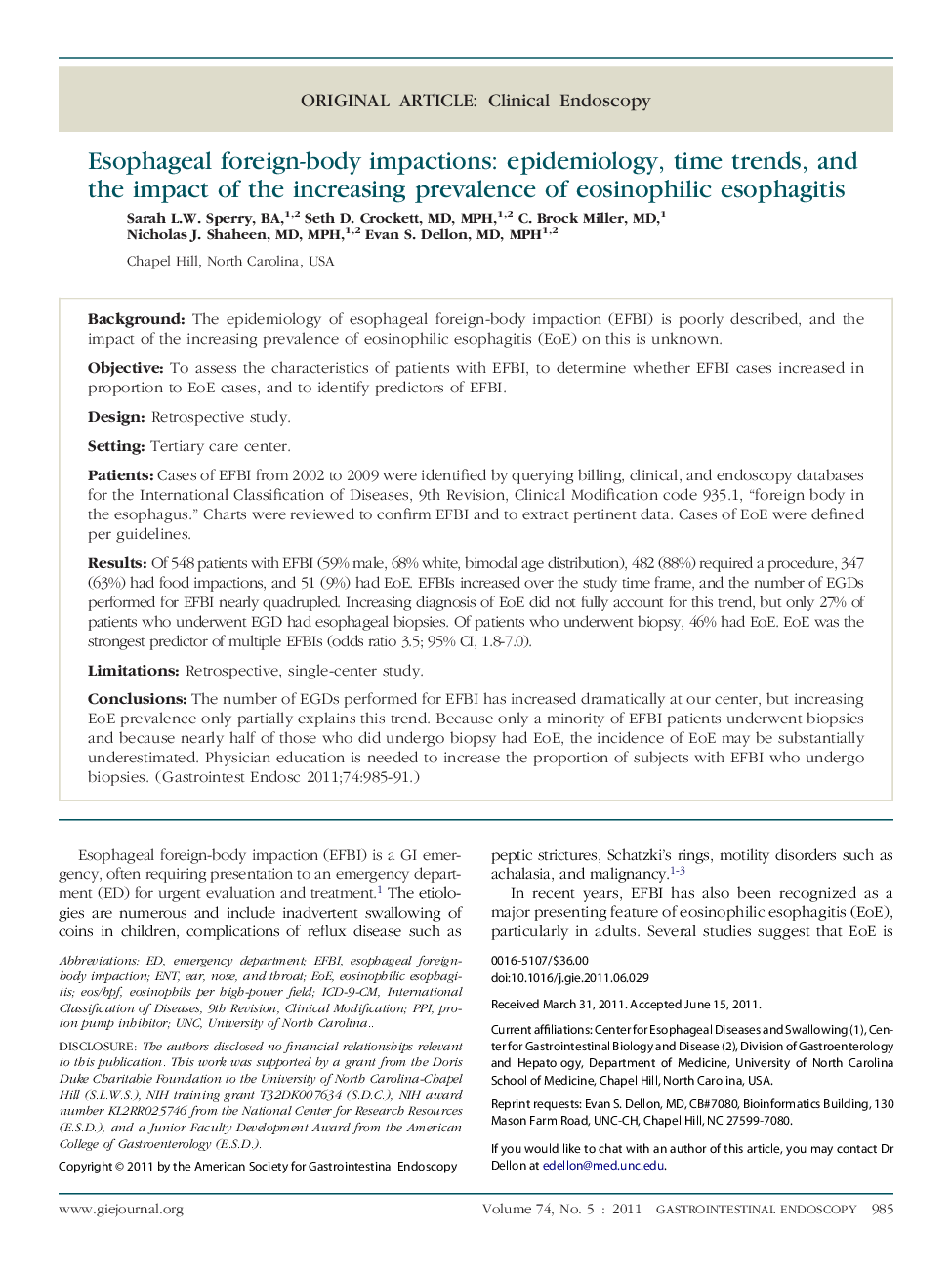| کد مقاله | کد نشریه | سال انتشار | مقاله انگلیسی | نسخه تمام متن |
|---|---|---|---|---|
| 3305353 | 1210353 | 2011 | 7 صفحه PDF | دانلود رایگان |

BackgroundThe epidemiology of esophageal foreign-body impaction (EFBI) is poorly described, and the impact of the increasing prevalence of eosinophilic esophagitis (EoE) on this is unknown.ObjectiveTo assess the characteristics of patients with EFBI, to determine whether EFBI cases increased in proportion to EoE cases, and to identify predictors of EFBI.DesignRetrospective study.SettingTertiary care center.PatientsCases of EFBI from 2002 to 2009 were identified by querying billing, clinical, and endoscopy databases for the International Classification of Diseases, 9th Revision, Clinical Modification code 935.1, “foreign body in the esophagus.” Charts were reviewed to confirm EFBI and to extract pertinent data. Cases of EoE were defined per guidelines.ResultsOf 548 patients with EFBI (59% male, 68% white, bimodal age distribution), 482 (88%) required a procedure, 347 (63%) had food impactions, and 51 (9%) had EoE. EFBIs increased over the study time frame, and the number of EGDs performed for EFBI nearly quadrupled. Increasing diagnosis of EoE did not fully account for this trend, but only 27% of patients who underwent EGD had esophageal biopsies. Of patients who underwent biopsy, 46% had EoE. EoE was the strongest predictor of multiple EFBIs (odds ratio 3.5; 95% CI, 1.8-7.0).LimitationsRetrospective, single-center study.ConclusionsThe number of EGDs performed for EFBI has increased dramatically at our center, but increasing EoE prevalence only partially explains this trend. Because only a minority of EFBI patients underwent biopsies and because nearly half of those who did undergo biopsy had EoE, the incidence of EoE may be substantially underestimated. Physician education is needed to increase the proportion of subjects with EFBI who undergo biopsies.
Journal: Gastrointestinal Endoscopy - Volume 74, Issue 5, November 2011, Pages 985–991